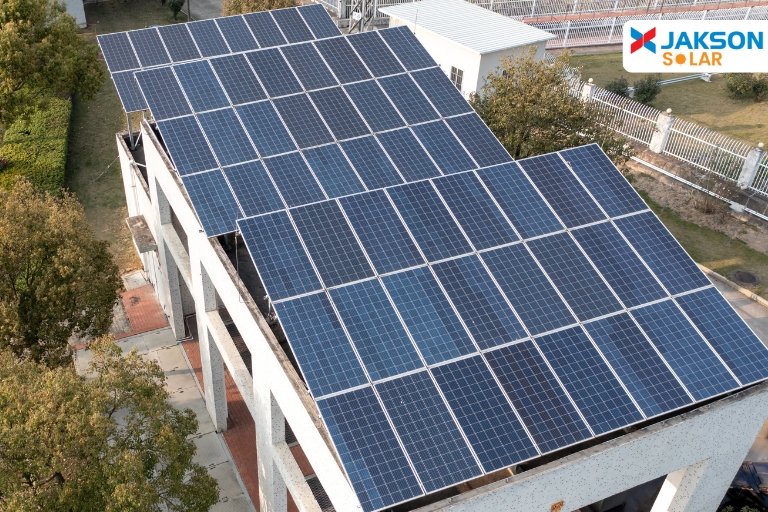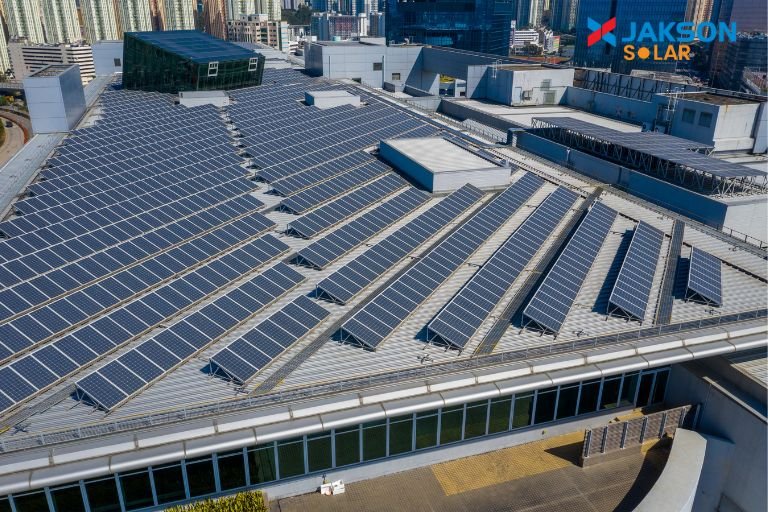Topcon Solar Panel Prices in India: What You Need to Know for Smart Solar Investments
Key Point of Topcon Solar Modules
- Topcon technology provides a superior performance: Topcon solar panels can give 22.3-23.7% efficiency when compared to conventional silicon solar panels that give an efficiency of 15-20%. So, Topcon Solar module can generate 30-40% more electricity on the same roof space with the same sunlight exposure.
- Competitive Pricing with Strong ROI: At present, the price for the Topcon solar panels is between ₹30-33 per watt. The 3kW systems provide a remarkable ROI of about 30% annually. So, the payback period with Topcon Solar panels reduces to about 3.5 years when government incentives or subsidies are applied.
- Strong Support from Indian Government: The PM Surya Ghar scheme offers a direct subsidy of up to ₹78,000 for a 3kW residential solar rooftop system.
What is Topcon Solar Panel Technology?
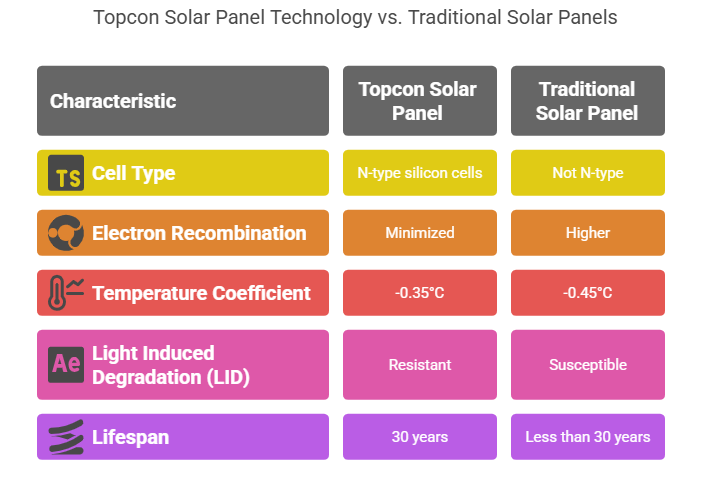
Full form of Topcon is (Tunnel Oxide Passivated Contact).
It is a new generation of solar panel technology using N-type silicon cells with ultra-thin oxide layers and a heavily doped polysilicon structure.
This advanced design minimises electron recombination losses, allowing more efficient conversion of sunlight into electricity compared to conventional panels.
The technology offers several performance advantages over traditional solar panels. India is a hot country and Topcon panels maintain their rated efficiency even in the high-temperature conditions like in India. The temperature coefficients of Topcon solar panel are -0.35°C compared to -0.45°C for silicon panels.
Moreover, N-type Topcon cells exhibit resistance to Light Induced Degradation (LID), maintaining consistent power output throughout a 30-year of lifespan.
The Jakson Group is planning to set up a 2.5GW Topcon cell manufacturing facility with an investment of about $240 million, with a strong commitment to give Indian users the best of solar technology panels.
Current Market Pricing and Positioning
In India, Topcon solar panels are positioned as premium with prices ranging from ₹30-33 per watt at present. Although the price depends on several factors such as specifications, panel size, project size, current prices, etc.
The higher prices can easily be offset by higher energy production efficiency and a longer solar panel life of 30 years.
Comparison of solar panel technologies showing efficiency
Government Incentives and Policy Support
The PM Surya Ghar Muft Bijli Yojana provides about 60% subsidy for systems up to 2kW and 40% for additional capacity up to 3kW.
In other words, a subsidy of ₹30,000 for 1kW systems, ₹60,000 for 2kW systems, and ₹78,000 for installations of 3kW & for installations above 3kW, there is no subsidy for extra kilowatts added to the solar installation.
For example, A 5 kW system will get a maximum subsidy of ₹78,000 only.
With a commitment to sustainable power generation solutions, the Government of India has allocated ₹20,000 crore for solar in the Union Budget 2025.
India has achieved a new milestone of solarising roofs of 10 lakh households as on 10th March 2025.
The government aims to solarise one crore homes by 2027, with roadmap milestones of 20 lakh rooftop solar installations by October 2025. This ambitious timeline creates an opportunity for potential investors to take advantage of the current subsidy program.
Performance Comparison and Technical Advantages
Topcon technology is superior to other solar technologies on several fronts. Their efficiency rates of 22.3-22.8% greatly surpass the PERC panels at 20-21% and traditional silicon solar panels at 15-20%. Testing shows that Topcon solar modules are capable of up to 3.15% more power generation per watt when compared to other technologies.
Bifacial Topcon panels achieve even greater performance, with bifaciality rates up to 85% compared to 70% for PERC panels. This helps in power generation from both sides of the panel, increasing the total energy yield by up to 30% in optimal installation conditions.
Temperature performance serves as another advantage, as Topcon panels retain greater efficiency in the hotter climates of India. These panels have lower degradation rates of 1.5% in the first year compared to 2% for PERC panels, providing better performance in long term.
Investment analysis for different sectors
The solar system’s economics greatly depend on the size of the installation and the type of application. Residential systems have a range of 1- 3 kW, which provides the most returning value because of the maximum subsidy available as per the PM Surya Ghar Yojna.
With Topcon solar panels, a household can get ROI in about 3.5 years after applying Government Subsidies.
Analysis of Solar System ROI & Payback Periods for the commercial sector
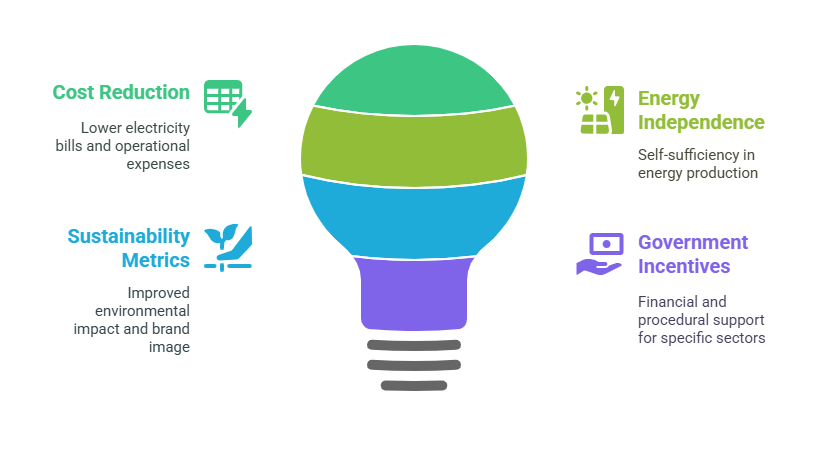
Typically, commercial and industrial applications have larger systems ranging from 100kW to several megawatts. A 100kW commercial system priced is 40-55 lakhs. Depending on the configuration, the system pays back a substantial reduction in electricity cost, energy independence facilities, operational cost reduction, and overall improved sustainability metrics.
Government incentives and priority processing under various schemes are available to educational institutions and healthcare facilities. These sectors often have consistent daytime energy consumption, which helps them offset their electricity bills considerably.
It also uplifts their brand image by contributing to the sustainable power generation movement of India.
Market Dynamics and Future Outlook
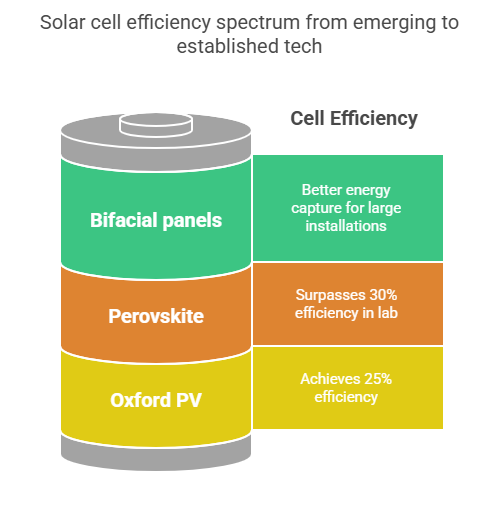
Advancements in technology continue to progress at a fast pace, as we see Oxford PV setting records of 25% efficiency, while perovskite tandem cells surpassed 30% efficiency in lab testing. Adoption of bifacial panels is also on the rise due to better energy capture for large installations.
The implementation of smart meters and net metering policies will also catalyse more solar investment by facilitating power surplus trading. With these advancements, solar adoption becomes more attractive for all consumer segments.





